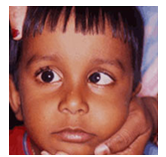Our Location
Dangratoli Chowk, Purulia Road, Ranchi- 834001

Cataract is the most common cause of blindness and is conventionally treated with surgery.
Cataract is clouding of the lens inside the eye which leads to a decrease in vision. Visual loss occurs because opacification of the lens obstructs light from passing and being focused on the retina at the back of the eye.
It is most commonly due to aging but there are many other causes.
Those with cataracts often experience difficulty in appreciating colours and changes in contrast, driving, reading, recognizing faces, and complain of glare from bright lights.
Refractive surgery is used to reshape the cornea to improve the patient’s unaided vision to the extent that dependability on viewing glasses may reduce to none.
LASIK is a surgical procedure that uses a cool (non- thermal) beam of light to gently reshape the cornea, the surface of the eye to improve vision.
The goal of any Laser correction procedure is to reshape the cornea so that it does anaccurate focusing of images on the retina.

There are four main types of disorders which are related to the retina:
ROP occurs in premature infants who are born before the retinal vessels complete their normal growth.
Multiple risk factors play a role due to which abnormal blood vessels start forming, which can initially distort and later even detach the retina.
Such infants who are at risk need to be screened early to identify the disease early and provide treatment to stop the ongoing damage at the earliest stage.
Risk factors for ROP are
Various investigative procedures are carried out which include microbiological workup for corneal infection, schirmer’s test, excisional biopsies.
The department has specular microscope, pachymeter, automated keratometer which help in detail evaluation.
Most common eye problems seen in children:

Dry eyes is a common condition that occurs when your tears aren't able to provide adequate lubrication for your eyes. If you have dry eyes, your eyes may sting or burn.
You may experience dry eyes in certain situations, such as on an airplane, in an air-conditioned room, while riding a bike or after looking at a computer screen for a few hours.
Ocular Trauma is broadly used to describe any physical or chemical injury to the eye. Scratching of the eye is a common cause for ocular trauma, while exposure to toxic chemicals or a major trauma can cause more severe injury to the eye.
Symptoms may vary depending upon the nature of injury but may include pain or redness of eye along with difficulty in moving the eye. Vision loss along with pupil dilation are also common symptoms along with black eye, swelling or bleeding.
Ocular trauma leading to globe rupture, corneal tear, scleral, lid injury or intraocular foreign body are managed on emergency basis.The first line of business is of course the removal of foreign bodies, if any. Flushing the eye can help ease discomfort as a measure of self- care, by removing toxins or foreign bodies.
Oculoplasty is a special discipline in ophthalmology that deals with plastic and reconstructive surgery of the periorbital and facial tissues which include the eyelids, orbit and lacrimal system.
The Light falling on the eye produces electrical waveforms which are displayed and analysed in electrophysiology testing. It includes
The primary objective of the electrophysiological examination is to assess the function of the visual pathway from the photoreceptors of the retina to the visual cortex of the brain. Information obtained from these diagnostic tests helpsto provide information about the visual system beyond the standard clinical examination of the eye and to establish the correct diagnosis or to help rule out related ophthalmic diseases.
Low vision aid clinic offers rehabilitative services in the form of various optical magnifiers, telescopes and electronic low vision aids to help patients with low vision.
If properly motivated, these patients can potentially benefit with the use of special aids or devices called ‘Low Vision Aids’ for their day to day work.
A person is said to have ‘Low Vision’, if he or she has a significant visual handicap in spite of treatment and best correction with standard eyeglasses or contact lenses.
Such people have significant residual vision but it is insufficient to meet the routine needs.
Low vision can result from
The Light falling on the eye produces electrical waveforms which are displayed and analysed in electrophysiology testing. It includes